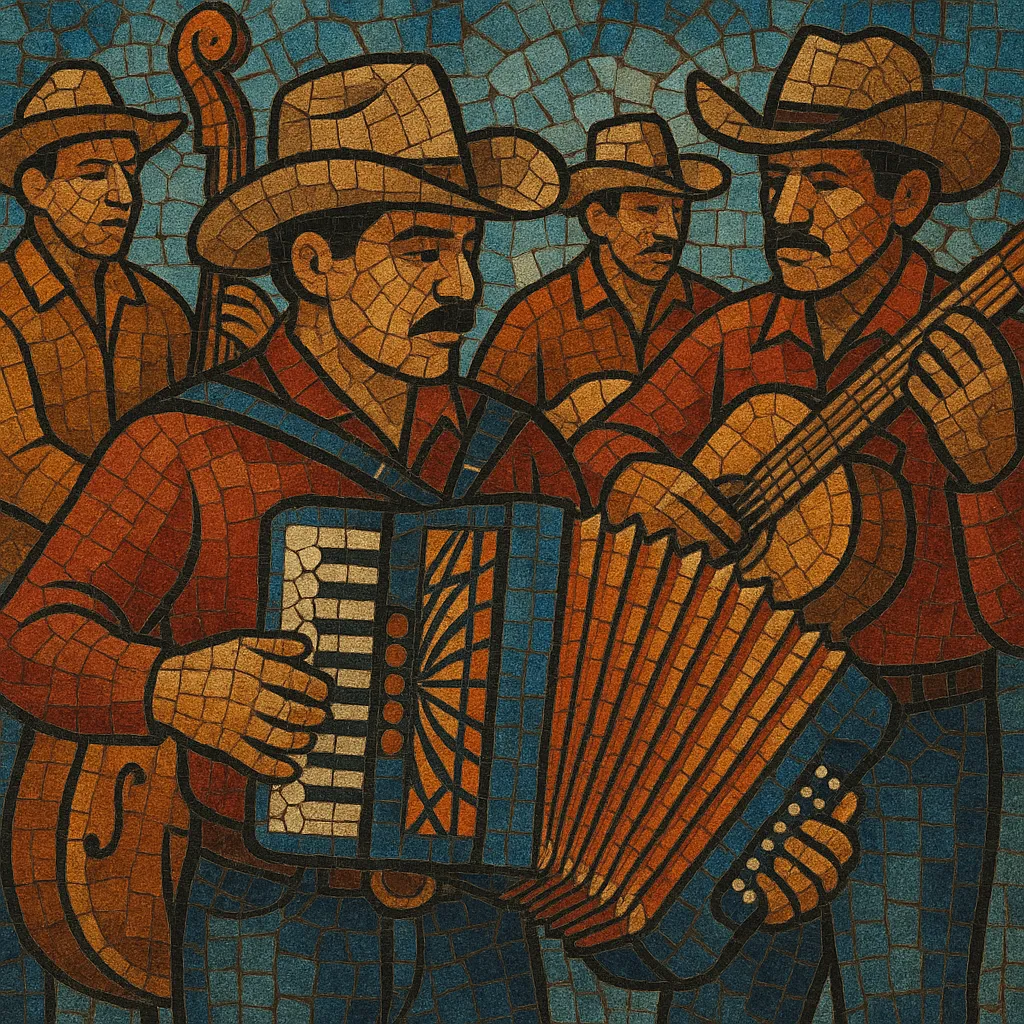Norteño (música norteña) is a Mexican regional style built around the bright timbre of the diatonic button accordion and the driving strum of the bajo sexto. Rooted in borderland dance music, it blends Central European polka, waltz, and schottische rhythms with Mexican corrido storytelling and ranchera songcraft.
Characterized by brisk 2/4 polkas and lilting 3/4 waltzes, norteño songs range from narrative corridos about migration and everyday struggles to romantic ballads and party tunes. Traditional ensembles used tololoche (upright bass) and snare, while modern groups often add electric bass, full drum kits, and occasionally tenor sax (in the norteño-sax substyle) or tuba (in norteño-banda). The result is a dance-forward, story-rich music that bridges rural and urban audiences on both sides of the U.S.–Mexico border.
Norteño emerged in the northern regions of Mexico and the Texas borderlands as German and Czech immigrants brought polka, waltz, and schottische repertoire and the diatonic accordion. Local musicians fused these dance forms with Mexican corridos and rancheras, establishing an accordion-led ensemble sound that would become emblematic of the region.
In the 1930s, figures like Narciso Martínez (with bassist Santiago Almeida) in Texas and counterparts in northern Mexico standardized the accordion–bajo sexto pairing and the rhythmic “oom-pah” foundation of norteño. Early recording technology and radio helped spread the style, while dancers embraced its energetic polkas and graceful waltzes.
Postwar migration and cross-border circuits amplified norteño’s reach. Los Alegres de Terán, Los Cadetes de Linares, Ramón Ayala y Sus Bravos del Norte, and later Los Tigres del Norte popularized the modern corrido—songs that chronicled working-class life, love, migration, and social conflict. Regional variants emerged, including norteño-sax in Chihuahua and Coahuila.
From the 1990s onward, groups like Intocable and Pesado introduced sleeker production and romantic pop influences, while others explored norteño-banda textures with tuba and fuller percussion. Lyrically, the genre continued to evolve from classic corridos to contemporary themes, influencing corridos tumbados and corridos bélicos. Streaming, arena tours, and international festivals have made norteño a global ambassador of regional Mexican music.


